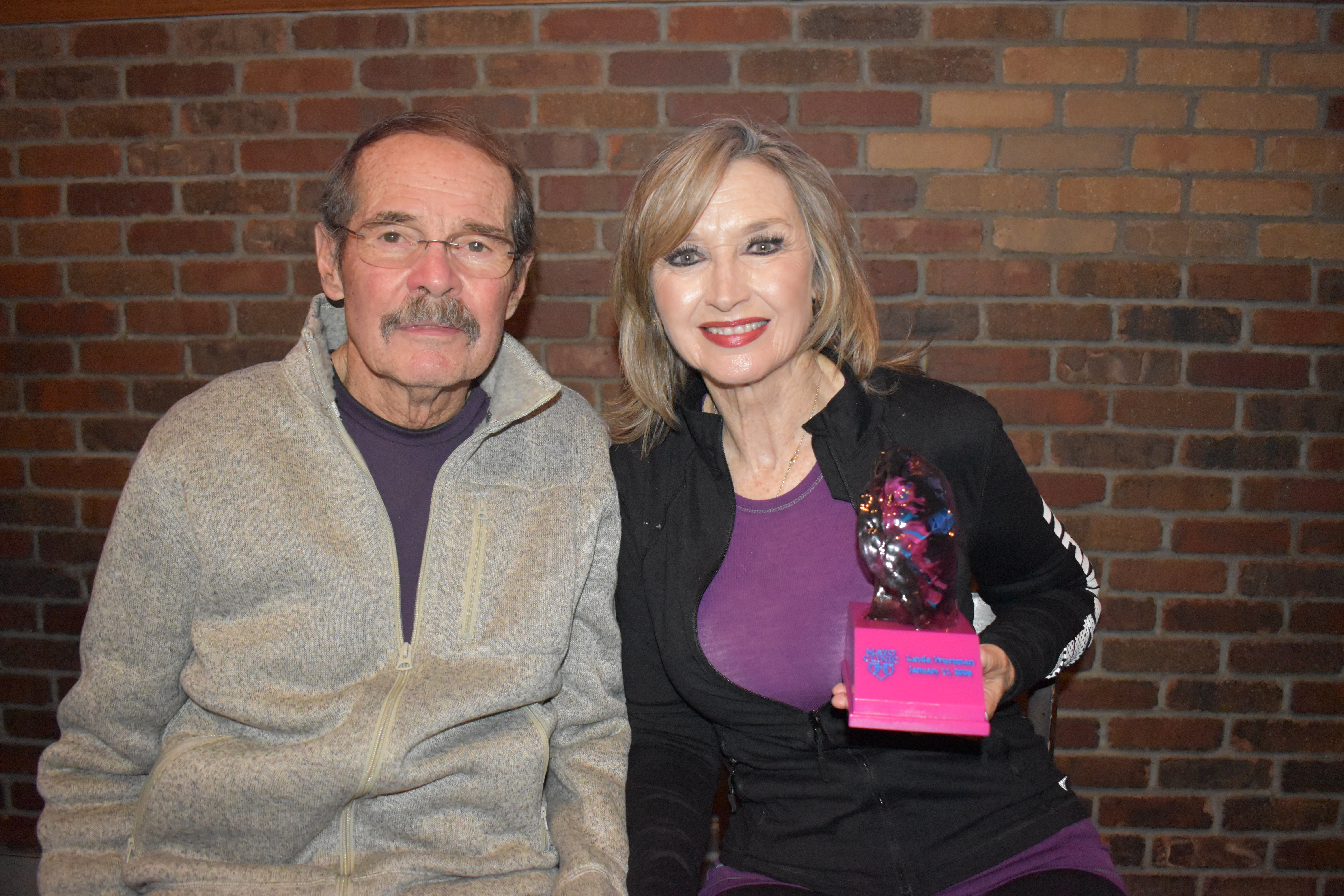
|
Linda Wortman, a former Mayo Clinic patient, is using the NFL to raise lung cancer awareness in Minnesota. Wortman’s team, named “Run Like L,” raised a little more than $50,000 and won the Team Draft Lung Cancer Survivors Super Bowl Challenge, now in its fourth year.
Donations will remain open through the Super Bowl, Wortman said — the Minnesota team beat another couple from Colorado by only a narrow margin, so they hope to keep the friendly competition up through early February. The money that Wortman raises will go to Mayo Clinic research, she said, to help improve lung cancer treatment and diagnosis. The other teams in the Super Bowl Challenge will donate their funds to other organizations working on lung cancer treatments.
Life-savers
A reception at Dooley’s Pub on Thursday night put Wortman back in a room with many of the doctors who, exactly one decade ago, removed a three-centimeter tumor from her upper left lung. The tumor was discovered after Wortman, who had experienced shoulder pain and a persistent cough for years, finally received a full physical with a chest X-ray at Mayo. That was in 2008. She knew something was off, but her previous physicians had told her that “never-smokers don’t get lung cancer.” Wortman’s one-day physical turned into three days of tests, before she was taken into surgery to remove the cancer and part of her left lung.
David Midthun, a lung specialist and pulmonologist at Mayo, said that 10 percent to 15 percent of lung cancer occurs in nonsmokers, making Wortman’s story a little unusual, but not as uncommon as you might think.
“Anyone can get lung cancer,” Midthun said. “If you have lungs, it’s possible.” “Unfortunately, the lung is a very silent organ,” Midthun said. Around three-fourths of people with lung cancer don’t show symptoms until the disease is already at an advanced stage.
A new face on lung cancer
Chris Draft, a former NFL player, understands lung cancer’s “image problem” well. Draft co-founded Team Draft after his wife, Keasha, died from Stage 4 lung cancer in 2011. She was healthy, fit, and young. Harnessing the power of the NFL to raise money, Draft said, gives the organizations a chance to put a new face on lung cancer.
Lung cancer patients are commonly portrayed in anti-cigarette commercials and DARE classroom materials. While communicating those risk factors of smoking is well-intentioned, the typical portrayal also may produce an assumption that the only people who get lung cancer are those who smoked or otherwise endangered their own pulmonary health.
“The stigma says only a certain type of person can get it, but anyone can get it,” Draft said. Wortman experienced her fair share of victim-blaming after her diagnosis. Her insurance company made Wortman, a non-smoker, attends nicotine rehab before covering her treatment. “People would say, ‘Lung cancer? You must have smoked,'” she said.
Eventually, she lost her life insurance — she was considered too much of a statistical risk to keep. “The key to getting people to care about lung cancer is letting them see people who look like themselves,” Draft said. “You use a platform to raise up someone to fight, but you have to find someone who wants to fight.”
Continued efforts
The Super Bowl challenge has been won, but the campaign is not yet over.
The “Run Like L” team name name came from her post-operation fundraising efforts. Wortman was a cross-country skier before her diagnosis, but had never run. She’s since set a goal of running a 5K in every state, then on every continent. Increasing pulmonary health awareness may help reduce stigma, she said. To that end, she champions an app called “First 2 Burst,” which can help people check their lungs for early signs of asthma or COPD.
Lung cancer and checking lung capacity aren’t directly related, said Dennis Wigle, chairman of thoracic oncology at Mayo. However, doctors are still trying to understand how much genetic and environmental factors affect nonsmokers who get lung cancer. Lung cancer is the most fatal kind because it’s caught late, he said. Early detection may move the needle.
Midthun directs the lung screening program, which uses low-dose CT scans to check high-risk patients — ages 55-80, usually, who smoke or smoked a pack a day for 30 years or two packs for 15. Raising awareness in general is also good, Midthun said, as most of the people who are considered high-risk for lung cancer aren’t getting screened.
Anne Halliwell, ahalliwell@rochestermaazine.com
|